#south american fur seal
Text


South American fur seal (L) – The South American fur seal ranges from Peru to southern Brazil, with most of the population living in Uruguay and the Falkland Islands. Their diet varies greatly depending on where they live, but unlike most pinnipeds they prefer to hunt in groups. Unfortunately they like to live in many of the same areas as the South American sea lion. Male South American sea lions will steal fur seal pups and kill them if they can. Like the Galapagos fur seal, South American fur seals nurse their pups for a comparatively long time.
Subantarctic fur seal (R) – Their range is a long band across the Atlantic, Pacific, and Indian Oceans just above the Antarctic Circle (hence "Subantarctic"), though some far-travelers have settled in Tasmania. Both males and females have gray fur on their backs and orange/cream fur on their undersides. Because their preferred fish migrates close to the surface, they have one of the shallowest dive depths of any pinniped.
#south american fur seal#subantarctic fur seal#fur seal#pinnipeds#pinniped#otariidae#tumblr pinniped contest#round 1#marine mammals
23 notes
·
View notes
Text
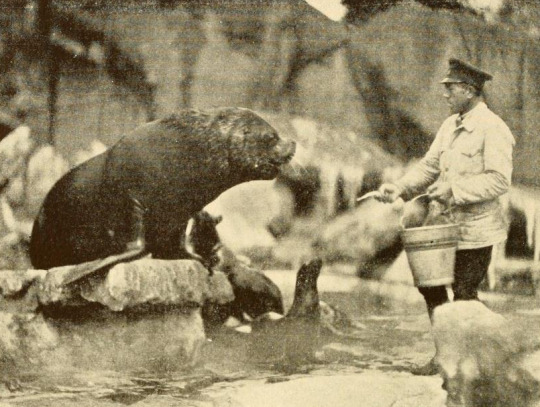
South American fur seal at Hagenbeck Zoo
By: Unknown photographer
From: Explorations and Field-work of the Smithsonian Institution
1929
#captivity#south american fur seal#fur seal#pinniped#carnivore#mammal#1929#1920s#Explorations and Field-work of the Smithsonian Institution
14 notes
·
View notes
Text
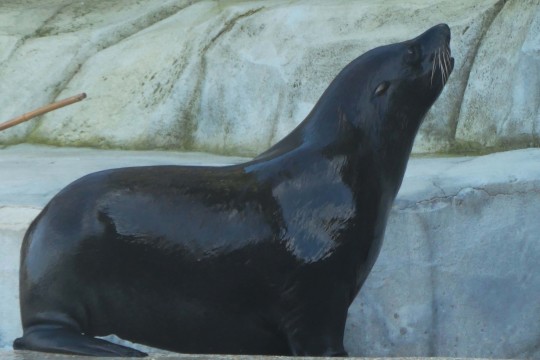

Otarie à fourrure australe - Il existe un dimorphisme sexuel important chez cette espèce. En effet, le mâle est deux à trois fois plus gros que la femelle.
Lieu : Parc Zoologique de Paris
#photo#zoo#photo animalière#animals photography#animaux sauvages#animaux#wild animals#animals#otarie#mammal#mammifère#marine mammal#mammifère marin#vie marine#sea life#seal#otarie à fourrure australe#south american fur seal
2 notes
·
View notes
Text
kinda hate it when i see a leopard seal post i wanna reblog but the op has to make it weird by mentioning how much they dislike / fear leopard seals in the description
#rón.txt#this has happened at least twice 😔#one was literally on a moodboard made FOR leopard seal kins. idk it just feels mean & unnecessary#other species do '''fucked up''' things too (LOTS of quotations because animals are not evil for doing their thing)#south american sea lions eat both fur seals/penguins & grey seals eat baby porpoises lol. bull grey seals also cannibalize#my point is ALL seals are '''fucked up'''' & thats fine#also i hate vagueing but im seething abt it the aforementioned poster also said that leopards are the only seals that eat warm blooded prey#which as you can see from my examples is extremely inaccurate lmao#sorry i am autistic & a seal kin so misinformation makes me unreasonably mad <3
4 notes
·
View notes
Text
CoD The Other Good Guys Bear! Edition
What if the rest of the good guys in call of duty were bears? Part 2 - see Part 1 for 141 as bears
More bear facts! Cause bears are truly the best! 🐻💯
Alejandro: Mexican Grizzly Bear*
Ursus arctos nelsoni - now Ursus arctos horribilis

*depiction of what a mexican grizzly bear may have looked like alive
A now extinct subspecies of the grizzly bear that once inhabited northern Mexico. Due to its predation on cattle farms, they were considered pests and hunted by farmers. By the 1960s there were less than 30 individuals remaining. In 1974 the last known individual was shot in Sonora.
It was smaller than grizzly bears from the United states and Canada, and its colouration was said to range from a pale yellow to greyish-white with a darker undertone, though some individuals were described to be darker and reddish brown.
Due to its silvery fur, it was called 'el olso plateado' (the silvery bear) in Spanish, though it's name in the Ópatas language (an indigenous Mexican people's) was 'pissini'.
Rudy: Spectacled Bear "Andean Bear"
Tremarctos ornatus

The last remaining short-faced bear, native to the Andes Mountains in northern and western South America. Though all bears are omnivores, the spectacled bear has a mostly herbivorous diet with only 5-7% of their diet being meat.
The bear is named after it's distinctive eye markings, though not all spectacled bears may have such markings. Individuals can have highly variable fur patterns making it relatively easy to distinguish from one another.
It's short face and broad snout is thought to be an adaptation to a carnivorous diet despite it's herbivorous preferences.
Paddington Bear is said to be a Spectacled Bear from Peru.
Farah: Asian Black Bear "Moon Bear"
Ursus thibetanus
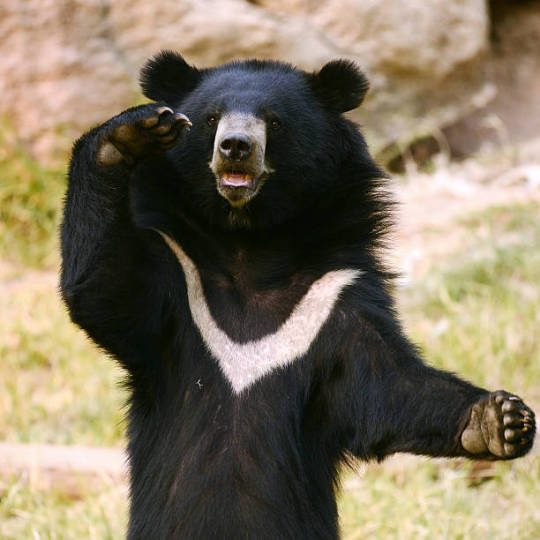
A medium sized bear native to Asia and highly adapted to arboreal life. It can be found in parts of Korea, China, Japan, eastern Russia, the Himalayas, southeastern Iran and northern India. It is listed as vulnerable due to deforestation and poaching for its body parts (used in traditional medicines).
The name 'moon bear' is given due to its distinctive creamy white cresent fur patch, though in some individuals it is "V" shaped. It has a powerful upper body stronger than it's lower limbs and are known to be the most bipedal of bears.
It has a reputation for extreme aggression despite their reclusive nature and there have been documented reports of unprovoked attacks. They are said to be more aggressive than the Eurasian Brown Bears that may cohabit the same areas and the American Black Bear.
Alex: American Black Bear
Ursus americanus

Alongside the Brown Bear, it is one of the only Bear species not threatened with extinction.
Despite living in North America, it is more closely related to the Asian Black Bear and Sun Bear than Grizzly Bears (North American Brown Bears) and Polar Bears. It's ancestors are thought to have split off from the Sun Bear.
Black Bears are distinguished from Grizzly Bears who may cohabit the same area, with their longer tall ears, straight face profile, shorter claws and lack of distinctive hump.
Teddy bears, Winnie-the-Pooh, and Smokey Bear are all inspired by the American Black Bear.
Nikolai: Polar Bear
Ursus maritimus
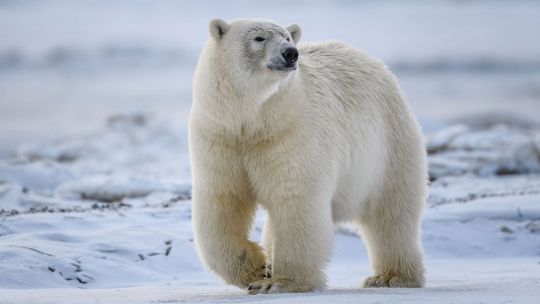
A large bear native to the Arctic. It is closely related to the Brown Bear and can hybridise with them though this is rare and not often seen. (See Grolar Bears)
They are the most carnivorous of all bear species (hypercarnivores), specialising in hunting seals through ambush attacks. Polar Bears are usually solitary but can be found in groups on land. They can form stable 'alliances' based on dominance hierarchies outside of breeding seasons with the largest males at the top.
It's common name was given in 1771, and was previously referred to as 'white bear', 'ice bear', 'sea bear', 'Greenland bear' in 13th - 18th century Europe. The Netsilik cultures (Inuit) named it 'nanook' and have several additional different names for them depending on sex and age of the polar bear.
Laswell: Kodiak Bear "Kodiak/Alaskan Brown Bear"
Ursus arctos middendorffi

Named after it's habitation of the Kodiak Archipelago in southwest Alaska, the Kodiak bear is the largest subspecies of Brown Bear, with some individuals comparable to the Polar Bear in size.
An island bear, it is 1.5-2x larger than it's mainland cousins the grizzly bear, though physically and physiologically, the two bears are very similar.
Due to its tendancy to feed in dense groups, it has thought to have developed more complex social behaviours (in comparison to mainland grizzly bears) to minimise infighting/fatalities via both verbal/ body posturing and social structures.
+
All info taken from wiki. Please let me know if ther any mistakes.
#cod mwii#cod mw2#call of duty modern warfare#cod mwiii#alejandro vargas#rudy parra#rudy cod#farah karim#farah cod#alex cod#nikolai cod#kate laswell#laswell cod#bears#bear facts
23 notes
·
View notes
Text
Anyways, here are my favorite bears
These are not all species of bears, just my faves. Also, no order cause I can't brink myself to rank these babies. Under the cut cause longpost
Beggining with a lesser known one, the only bear species that exists in south america is the Spectecled Bear (also known as the Andean Bear)
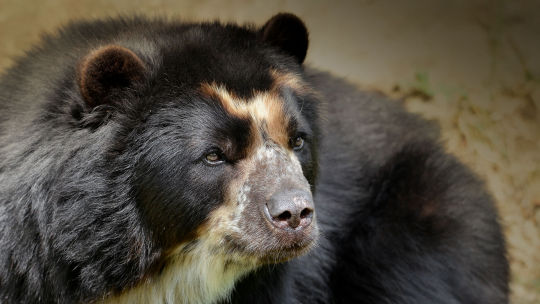

They have this name because of the white/cream markings on their face that can somewhat resemble glasses! As I said before, they're the only south american species of bear and is the last short faced bear alive, and most are found in the Andes. I like them because look at that cute little face and also latino solidarity. Fun fact, Paddington is a specteled bear considering he is from Peru.
Now moving on. She is beauty, she is grace, she is the largest species of bear AND the largest land predator, she is the Polar Bear
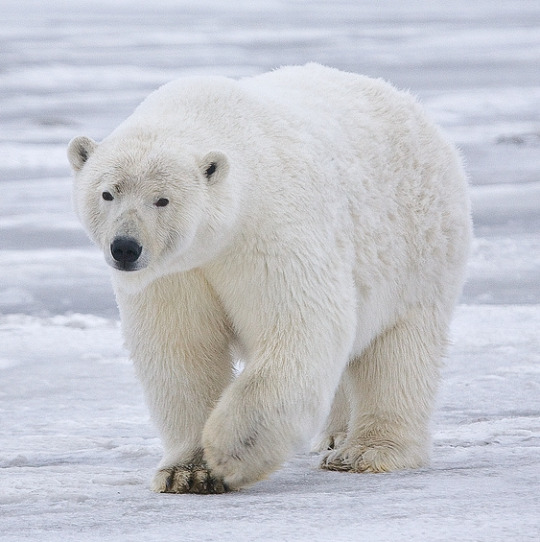
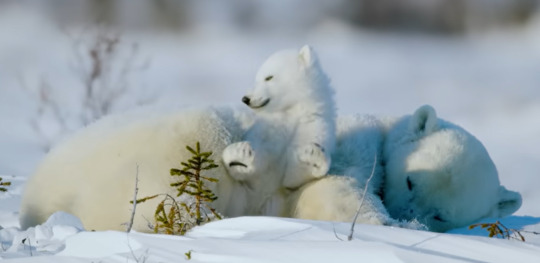
Few fun facts. Polar Bear's scientific name is Ursus maritmus (which would very roughly translate to sea bear) bc of how much time they spend swimming (which also means they are grear swimmers!). They are the most carnivorous of the bears, and imo, they will eat anything that is made of meat. The reason you see so many pictures of mother bears hugging their cubs is because of the cold. Althought, when they are old, their fur is great to protect from the harsh weahter, when they are young they are still vulnerable to it, so mama bears hugs her cubs to keep them warm. Oh and another thing, I discovered that bears can do this thing where they'll find a hole in the ice where seals come up to breath and they just...sit there and wait for it to happen (and they can wait for a LONG time). I love how cute they are when they're young and how fierce they are as adults, and honestly, look at their faces, I love them a lot.
Next, we're back in the american continent, this time with the American Black Bear
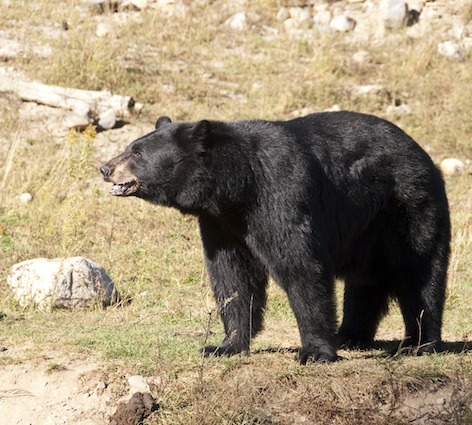

The american black bear has a lot of subspecies, which are mostly different colors than their signature black fur, they are omnivorous (and they will eat anything, like i've seen videos of them eating crabs and moths), and also, they are really good climbers! They are mostly found in North America, and they are a bit more chill, like if you ever encounter a black bear, you can scare it away by making yourself look big and making loud noises. They don't have the shoulder hump that brown bears have, and their ears are more prominent (which makes them so freaking cute.) Also, there has been black bears who have made their dens inside of trees, which i think is cool .
Lastly, this might be cheating, but it's a subspecies of the black bear, which is the Kermode Bear
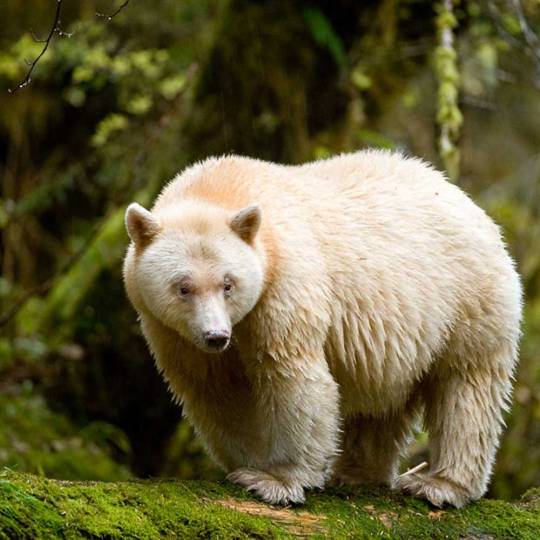

Mostly found in British Columbia, the kermode bear is also known as the spirit bear or the ghost bear, due to their white fur (important to note that they do not have albinism, look at their noses and eyes). The gene that makes them white is a recessive gene, so they are very rare. It's believed that they might be more succesful when hunting fish bc of their fur color, which could make the fish believe that they are a cloud. I love how different they are, how rare they are, and how beautiful they look, especially in contrast with the green around them.
As an honourable mention, I'll talke not about a species but an individual bear known was Grizzly 399.

(she's the mother in case you couldn't tell). She and her cubs can be found in the Yellowstone National Park, and she's the most famous brown bear in the world. She is famous for how many cubs she has had and raised (22 cubs and grandcubs) and she lives in proximity to humans (some believe that the reason she does that is to avoid the male bears when she has cubs). Also she has learned and taught her progeny how to avoid getting hit by cars, and she's a very old bear. (having 27/28 years, which trust me, for bears is a lot and she's still having cubs!). There have been hunters who claimed to have killed Grizzly 399 but they were all lies as she is very alive and well with her cubs. Also, forgot to mention, the reaosn she has had so many cubs is because while most bears give birth to 1 or 2 cubs, 399 often births twins and triplets, and she has had quadruplets which is very rare for most bears (and she raised them succesfully, which is even more impressive).
Anyways, these are my favorite bears.
#most info is from wikipedia and videos from national geographic bbc and others#pictures are from the internet#bears#longpost#polar bear#american black bear#kermode bear#grizzly 399#spectecled bear#in julie andrews voice *these are a few of my favorite bears
18 notes
·
View notes
Text
Harbor seal
Grey seal
Ringed seal
Spotted seal
Caspian seal
Baikal seal
Hawaiian monk seal
Mediterranean monk seal
Monk seal
Ribbon seal
Hooded seal
Harp seal
Bearded seal
Crabeater seal
Leopard seal
Ross seal
Weddell seal
Elephant seal
Southern elephant seal
Northern elephant seal
Antarctic fur seal
Guadalupe fur seal
Juan Fernandez fur seal
Galapagos fur seal
New Zealand fur seal
Australian sea lion
New Zealand seal lion
Subantarctic fur seal
Brown fur seal
South American sea lion
California sea lion
Galapagos sea lion
Stellar sea lion
Northern fur seal
South american fur seal
Atlantic walrus
Pacific walrus
#seal#pinniped#sealposting#baikal seal#sea lion#walrus#tusk#fur seal#elephant seal#ribbon seal#harbor seal#a lot of seals
43 notes
·
View notes
Note
"How would Dovewing be a seal? They're not even-"
Exhibit A: The Harp Seal.

"How would Frostpaw even be a seal they're not even-"
Exhibit B: The Harp Seal Pups
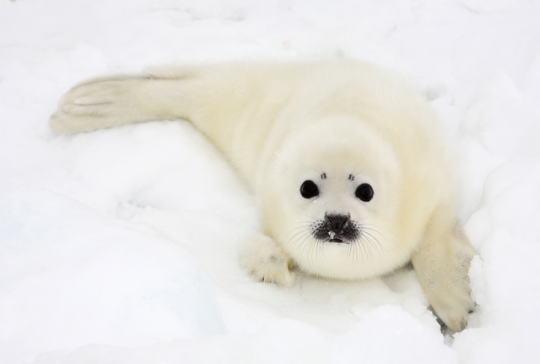
They give me aquatic dog energy. If I wanted to be extra I would've made Dovewing a leopard seal.

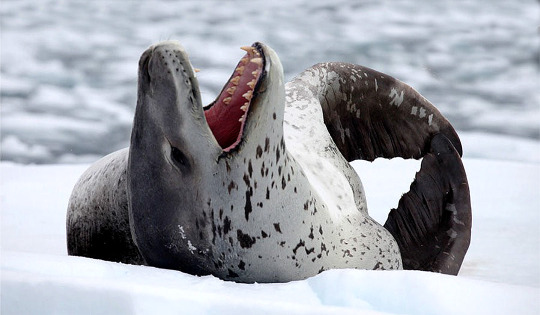

Tigerheartstar is for sure a Walrus.
No debate.
He's a dork that's either a walrus or a smaller than average elephant seal because I like to imagine Dovewing being bigger than him.
Ivypool's a sea lion don't ask how they're sisters.
Badass seal/sea lion DoveWings, for TigerHeart I also bring up the idea of him being a South American Sea Lion or Brown Fur Seal
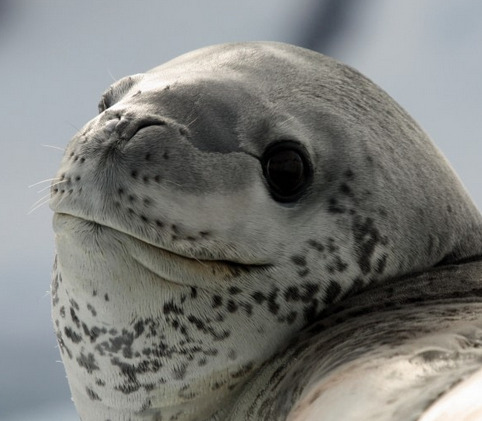
DoveWing turning around because she heard TigerHeart calling her name
18 notes
·
View notes
Text

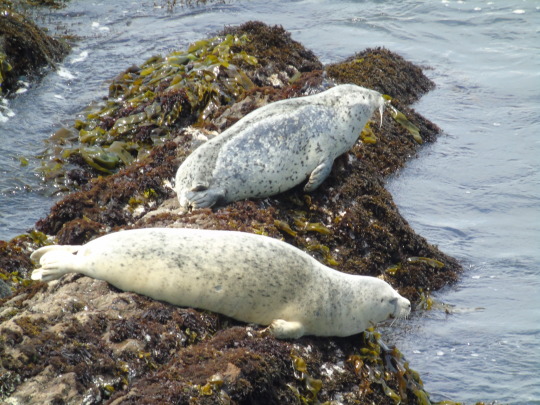
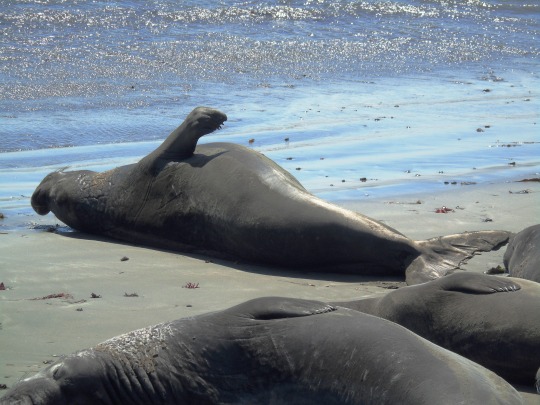

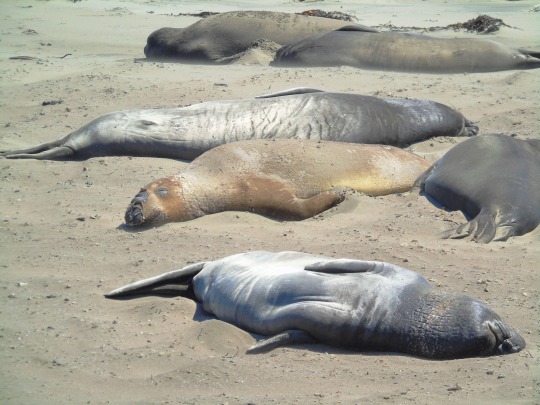
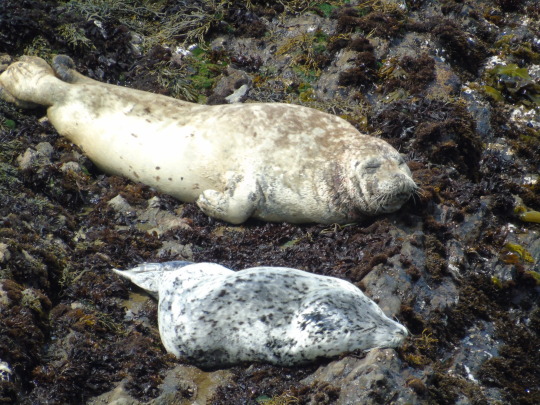
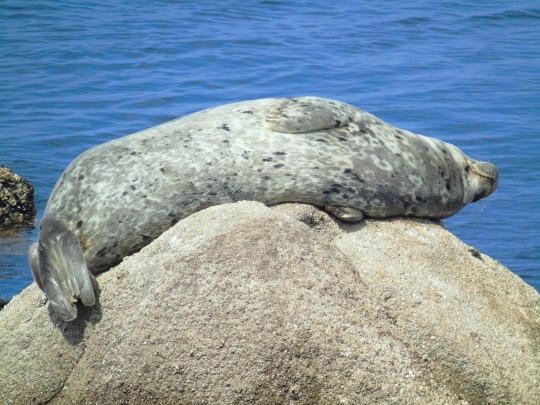
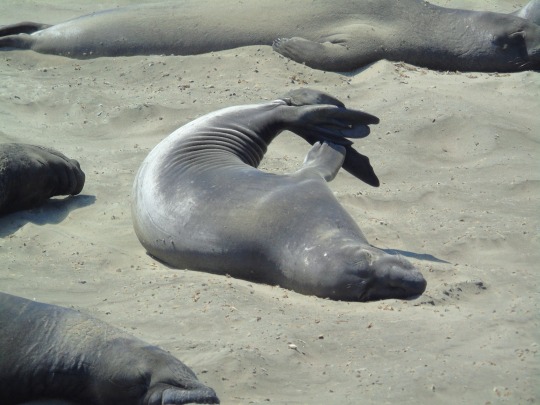
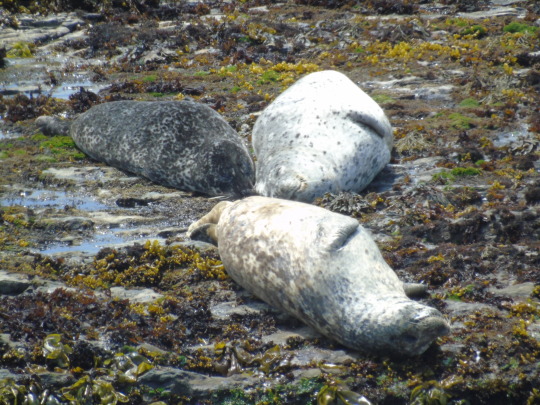









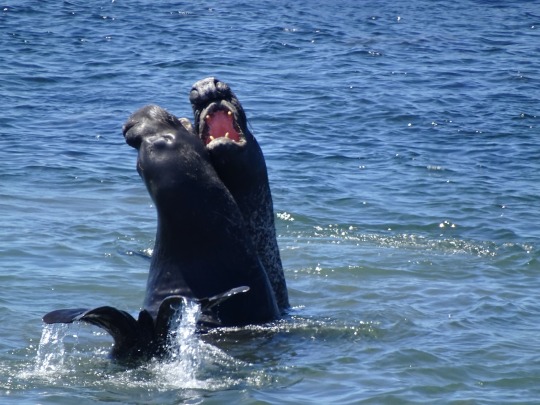





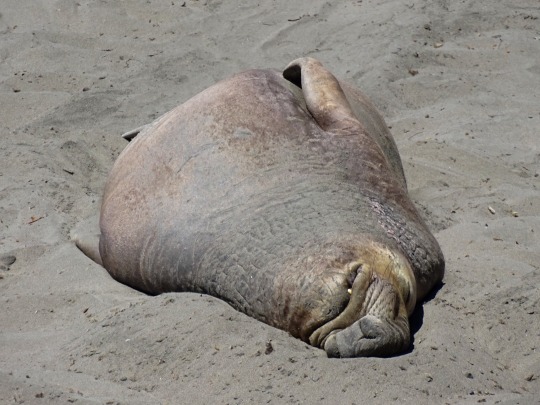
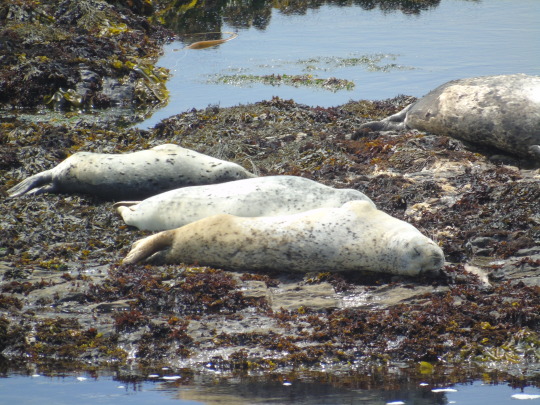

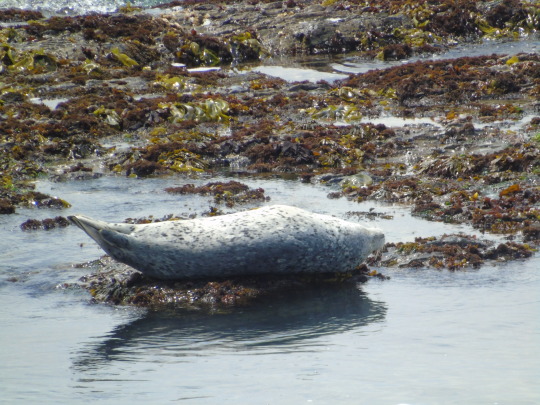
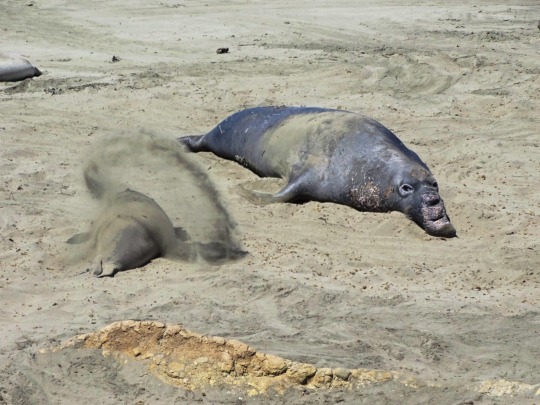
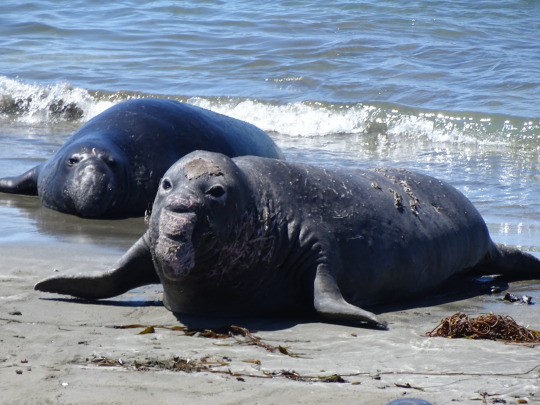
International Day Of The Seal
International Day of the Seal takes place on March 22. It is a day set aside to raise awareness about seal conservation around the world. It’s also a day for us seal lovers to honor this amazing sea mammal. Seals are not only adorable and attractive, but their presence in the world today has a significant impact. They are also the most targeted marine mammal on the planet. These creatures are in danger of soon becoming extinct. Humans have always posed a significant threat to them, as people capture them for feed, blubber, or pelts. As a result, this day is observed to emphasize the importance of preserving their population.
History of International Day Of The Seal
This international holiday was established in 1982. Since then, the holiday has been observed yearly on March 22. The total number of seal species was already declining at the time. Seals were increasingly becoming victims of humans. This is because humans hunted seals for their pelts, blubber, and meat. To put an end to this brutality, the day was proclaimed the “Day of the Seal.” The United States Congress established the worldwide holiday to raise awareness among Americans about the plight of seals. They developed several projects to raise awareness about the importance of protecting seals.
A seal is classified as a pinniped, which means “fin-footed” in Latin. The walrus and sea lion are two other pinnipeds. Seals are distinct from other pinnipeds in that they do not walk with their flippers. They frequently move about on their bellies when on land. Their flippers assist them to move quickly in the water. Seals are also calmer and smaller than sea lions and walruses.
Seals are located around the north and south poles. They are preyed upon by predators and hunters. This has put their population at risk. This day was established to raise awareness about how they might be saved.
This day is observed all over the world. Although seals dwell in the Arctic Circle and Antarctica, millions of people around the world adore them, and so this holiday is observed globally.
International Day Of The Seal timeline
1811 Pinnipedia
Johann Karl Wilhelm Illiger names both a clan and an order Pinnipedia.
1886 The Extinction of the Seal
The animal is considered extinct until a little group is discovered near the Yucatán Peninsula.
2001 The Link Between Sea Lions and Seals
Genetic analysis reveals that the north fur seal is more closely linked to many sea lion species.
2021 Recognition By the I.U.C.N.
Thirty-six pinniped species are recognized by the International Union for Conservation of Nature (I.U.C.N.).
International Day Of The Seal FAQs
Seals descended from what animal?
The earliest progenitors of seals and sea lions were mammals that evolved from land to sea. The ocean began to cool around 36 million years ago, near the end of the Oligocene, causing major changes in ocean circulation.
Is the seal a friendly creature?
Seals look attractive and sociable, which they are. Most zoos and marine attractions portray seals as trainable, clever, and human-friendly.
Do seals have fur?
Northern fur seals have the second thickest fur on the planet, with 300,000 hairs per square inch.
How to Observe International Day Of The Seal
Attend a public awareness event
Watch a documentary about seals
Visit a seal exhibit zoo
During International Day of the Seal, many naturalist organizations and zoos host awareness events. Attend a presentation to learn more about these wonderful creatures.
There are numerous videos and reading resources available about seals and their habitat. Spend the day learning about how climate change affects these seals.
Seals are related to sea lions and walruses, which live in the Arctic Circle and Antarctica. However, you don't have to travel to the poles to meet these magnificent creatures. To celebrate the festival, you can visit a zoo and learn about them.
5 Interesting Facts About Seals
There are various species
Their skin helps with temperature
They can detect prey
They live up to 30 years
They are heavier than us
There are 33 kinds of seals.
Blubber is the layer of fat beneath the skin of seals that keeps them warm in frigid water.
A seal’s whiskers aid in the detection of prey in murky water.
Their life expectancy is 25 to 30 years.
Smaller seals weigh 100 pounds, while the largest weigh more than 7,000 pounds.
Why International Day Of The Seal is Important
It’s a week to achieve something worthwhile
It encourages study
It encourages conservation
All animals are important. International Day of the Seal allows us to perform important conservation work and identify solutions to help the planet.
International Day of the Seal encourages people to learn more about seals. It is a means of making people more aware of their place in the larger scheme of things.
The importance of conservation of vulnerable animals is emphasized on this day. Contributions to this cause are encouraged.
Source
#Point Arena#Monterey#Elephant Seals of San Simeon#habor seal#USA#summer 2022#2017#Northern elephant seal#Pacific Ocean#fauna#animal#Elephant Seal Vista Point#wildlife#International Day Of The Seal#22 March#InternationalDayOfTheSeal#InternationalSealDay#California#West Coast#original photography#tourist attraction#flora#landmark#nature#beach#travel#vacation
3 notes
·
View notes
Photo
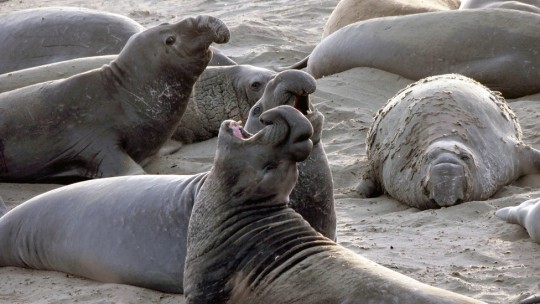

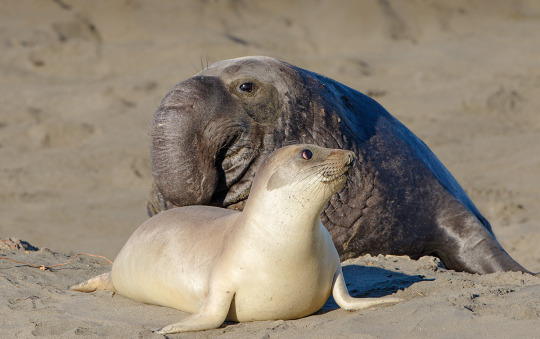
Elevating the Elephant Seal
Found all along the Pacific coast, from Alaska to Antarctica, elephant seals are famous for their size, aggression, and unusual noses. There are two species of elephant seal, both belonging to the true seal family Phocidae. The northern elephant seal (Mirounga angustirostris), as its name suggests, is dispersed along the northern coasts of North America, from the American state of Alaska all the way down to Baja California in Mexico. Southern elephant seals (Mirounga leonina) reside in Antarctic and sub-Antarctic waters up to the southern most regions of Chile and Argentina in South America. Both species migrate twice a year. The rest of the year is spent foraging in the deep waters of the Arctic or Antarctic, respectively, and these trips can take anywhere from 10,000km to 20,000, making them one of the longest migrations of any marine mammal.
The main difference between northern and southern elephant seals is their size. A male northern elephant can weigh between 1,500 and 2,300kg, while females are much smaller at 400 to 900 kg. M. angustirostris also has a shorter nose than its southern cousin. M. leonina females are similar in size to the northern elephant seals, at 400 to 900 kg, but males can easily reach up to 4,000kg, making them the largest species of seal on the planet. Both elephant seal species are generally brown in color and have only a short, bristly coat of hair. They have no ears, distinguishing them from other pinnipids like sea lions. The males, or bulls, of both species also have pronounced nose called a proboscis which serves to amplify loud mating or threatening calls.
Elephant seals come ashore twice a year in groups called colonies. In the summer, individuals gather on land to go through a ‘catestrophic molt’. During this time, the fur and the top layer of skin peel from the body. This is a necessary process because when at sea, blood is not circulated to the skin in order to keep elephant seals warm. Because of this, they are also unable to grow new hair or skin continuously. When the outer layers of skin and hair wear down or become ragged, individuals travel to traditional breeding grounds and take a month to shed their outer layers and grow a new protective coat.
From December to March, dominant males congregate at breeding grounds to compete for mating rights. The bulls are very aggressive, and fight by slamming their bodies together and raking each other with their sharp canines. Once a bull has established dominance on a beach, other males typically leave, though some may try to sneak back in to mate when the alpha bull isn’t looking. Each dominant male controls a harem of 40 to 50 females. Each female, or cow, only gives birth to one or two pups after a gestation period of 10 to 12 months. Only a few days after giving birth, she is ready to mate again.
In the meantime, the mother nurses her pup almost constantly for about a month. During this time, the female does not leave the beach to search for food, and both she and the bulls lose up to a third of their body weight. After about a month the mother weans her pup off her milk. However, some pups are “super weaners” and will search out another female-- usually one who has lost her pup-- and nurse from her for as long as possible. This gives the pup a significant size advantage: pups that are successfully weaned at 6 weeks weigh only 160kg, while super weaners can weigh up to 270 kg. The advantage of being this big is in the blubber: elephant seals require large amounts of excess fat as an energy source when food is scarce and to keep them warm when they forage in the cold waters of the northern or southern Pacific Ocean. However, the effectiveness of this strategy for survival has yet to be fully determined. The average lifespan of M. angustirostris is 9 years, while M. leonina can live up to 21 years old, though in both species males tend to die much sooner than females.
Outside the molting and mating seasons, elephant seals spend up to 90% of their lives in the water, usually alone. Foraging migrations require long, deep dives into the cold Arctic or Antarctic oceans to search for squid, rays, small sharks, and schooling fish. Some of these dives are the deepest recorded for any non-cetacean mammal at up to 1,550m below the surface. To reach these depths, elephant seals can hold their breath for almost two hours, although the average length of a dive is 20-60 minutes. Due to their large size, adult elephant seals have few predators. Some sharks, like great white sharks (Carcharodon carcharias) and southern sleeper sharks (Somniosus antarcticus) will go after adults when desperate. More common is predation on elephant seal pups; killer whales (Orcinus orca), leopard seals (Hydrurga leptonyx), and New Zealand sea lions (Phocarctos hookeri) will all hunt young pups when no parents are nearby to defend them.
Conservation status: The IUCN has rated both elephant seal species as Least Concern. In the late 1800s, northern elephant seals were thought to be hunted to extinction but a population of 20-100 individuals was discovered on Guadalupe Island off Baja California. Southern elephant seals were also hunted, but to a lesser extent. M. angustirostris and M. leonina populations are now well in the hundreds of thousands, though the population of southern elephant seals is declining once more due to disruption of their primary food sources.
Photos
Taiki Adachi
Nick Ut
Steve Zamek
If you like what I do, consider buying me a ko-fi!
#northern elephant seal#southern elephant seal#carnivora#phocidae#elephant seals#seals#pinnipeds#carnivores#mammals#coasts#coastal mammals#open ocean#open ocean mammals#pelagic fauna#pelagic mammals#north america#western north america#south america#western south america#antarctica#pacific ocean
79 notes
·
View notes
Text
When in 1923, Mathias F. Chapman arrived in the Port of Los Angeles with 11 chinchillas, few expected that he would revolutionize the fur-trade business. Previous attempts to breed the little Andean mammal in captivity had failed, and traders and consumers feared that the days of the chinchilla coat, a garment that usually required 110 skins, would soon be over. But despite all odds, in 1946, Life magazine reported, there were near 200,000 chinchillas raised in captivity in the United States. Breeding had replaced hunting, and the chinchilla became a North American commodity.
---
To understand this radical transformation, we need to go back to the Andes and Chapman’s crossing. Traveling through Chile in the 1830s, French naturalist Claudio Gay saw for the first time a chinchilla, one of the “most beautiful animals,” as he wrote in his natural history. The Chinchilla lanigera (Molina 1782) was the most sought and valued chinchilla. It originally lived in the Chilean valleys of Illapel and Choapa to the south of Peru and Bolivia, a territory known for its mining industry, arid landscape, and limited vegetation. Indigenous people, wrote José de Acosta in his Natural and Moral History of the Indies (1589), used animal hair to make blankets and coverings.
Throughout the nineteenth century, hunting came in tandem with the expansion of the mining industry and the destruction of local habitats such as the algarrobilla, a shrub sought for its tannins that chinchillas also consumed.
The docile mammal with a soft coat became a global commodity, complementing a collection of South American animals used for fur, including seals and guanacos. Between 1898 and 1910, Chile exported about seven million chinchilla pelts per year. Pushed by high prices and soaring demand, hunters used fire and dogs without discriminating between old and young or male and female animals. Hunting methods, lack of regulation, and rising demand in the North Atlantic created the perfect storm.
---
In 1919, Chapman got a job as a mining engineer in the copper town of Potrerillos, in the southern tip of the Atacama Desert. By then, the chinchilla was almost extinct. [...] While working at the mine, Chapman bought a chinchilla from a trapper and spent the next three to four years looking for animals to raise. He [...] traveled throughout the Andes to Peru, Bolivia, and Argentina. His experience was not unique. US engineers working in Latin America usually toured the surrounding areas. Hunting, exploration, and expeditions were part of their culture, their recreational activity, which informed the way they experienced what they saw as remote regions.
---
Previous efforts to raise chinchillas in captivity had failed. In the early 1920s, scientific knowledge about this animal was still scarce. [...] Relocating chinchillas from their home environment to southern California was a grueling task. Chapman designed a special cage for the ocean trip between Chile and Los Angeles. As John Angus Haig wrote in the Nation’s Business magazine in 1937, Chapman “built an ingenious box with chinchilla pens in the ends and an ice compartment in the middle.” He slowly moved them to lower altitudes to guarantee acclimation, and after a year, they were ready to sail north. The trip from Iquique, Chile, to Los Angeles Harbor took about forty days and was incredibly challenging. Despite his constant care, one chinchilla died, and all lost their hair. [...] Then, he moved the animals down to Inglewood, South Los Angeles. The Chapman farm produced knowledge about domestication and acclimation, attracting visitors from Hollywood stars to animal experts. Many would come to replicate his route, method, and, especially, the icebox. In 1939, the LA Times reported that James F. Mitchell adapted the icebox to bring chinchillas from Peru to San Diego, California, where he and his wife opened a ranch. The chinchilla business thrived. [...]
---
The breeding business expanded in the 1930s–1940s, and farms popped up throughout the western United States and Canada. But while many advertised it as a lucrative activity that could supplement ranchers’ income, raising chinchillas was hard work. The animals were delicate and susceptible to high temperatures and diseases, the daily cleaning of the cages was time-consuming, and profit was unreliable. According to a booklet from the US Department of Agriculture (USDA), ranchers kept the animals in metal, wood, or wired-floored pens in basements or other dark buildings. Space was always an issue, especially in ranches located in semi-urban areas such as the San Fernando Valley. While many admired their beauty and friendliness, they were a commodity and a business. Ranchers kept records, weighed them regularly, and tattooed an identification number in one of their ears. Most ranchers were breeders, but the largest ones also sold pelts. To kill a chinchilla without damaging the fur, they injected Nembutal or strychnine [...].
---
Text by: Angela Vergara. “From Wilderness to Breeding Farms: The Domestication of the Chinchilla lanigera.” Environment & Society Portal, Arcadia no. 15. Rachel Carson Center for Environment and Society. Summer 2022. [Bolded emphasis added by me.]
24 notes
·
View notes
Text


That's right followers, the Tumblr Pinniped Contest is here! 34 extant species, a randomly generated bracket, and a contest for the ages. Only one will wear the crown of Tumblr's favorite pinniped! Polls will be posted every day (approximately, be nice I'm on painkillers).
As you can see because we don't have an easily divisible number of species we will be starting out with a mini round.
Round 1:
Walrus vs Antarctic fur seal
Brown fur seal vs Galapagos fur seal
New Zealand fur seal vs Guadalupe fur seal
South American fur seal vs Subantarctic fur seal
82 notes
·
View notes
Text
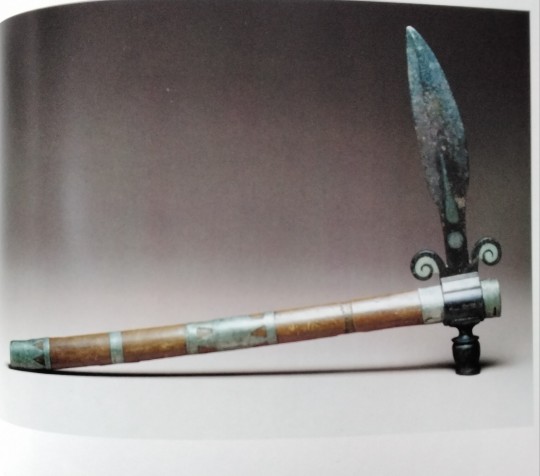
Cherokee Tsalagi pipe tomahawk, c.1770.
Region: South-eastern North America.
The pipe tomahawk, or peace axe, is attributed to the Cherokee Tsalagi people of the south-east – once the largest and most important tribe in the area. The tomahawk was made shortly before they were forced to leave their homelands in Georgia, North and South Carolina, Virginia, Kentucky and Tennessee. The pipe tomahawk is at once a symbol of both aggression and of conciliation, although they were used more as an accessory than a weapon. The name derives from the Algonquian word Tamalak or Tamalakan, meaning implement used for cutting. ‘Tomahawk’ is generally used to describe a lightweight axe, and this example doubles as an pipe. The various adornments used incorporated wood, metals and feathers, and Iroquois men traded furs for such tomahawks. They also became trading goods for European- Americans.
Such pipes had religious importance and were smoked at council meeting. Ornate tomahawk pipes were given as gifts to seal alliances between different groups and they gave status to their owners. Old photographs show prominent chiefs proudly carrying their tomahawk pipes in a ceremonial manner.
Source: ‘Folk Art’, Susann Linn-Williams, pp.162-63.
#Native American#traditional crafts#Cherokee Tsalagi tribe#peace axe#axe#pipe#tomahawk#Algonquian#chief#ceremonial
5 notes
·
View notes
Note
Knotting:
The bulbus glandis (also called a bulb or knot) is an erectile tissue structure on the penis of canid mammals.[1][2][3][4][5][6] During mating, immediately before ejaculation the tissues swell up to lock (tie) the male's penis inside the female. The locking is completed by circular muscles just inside the female's vagina; this is called "the knot" tightening thus preventing the male from withdrawing. The circular muscles also contract intermittently, which has the effect of stimulating ejaculation of sperm, followed by prostatic fluid, as well as maintaining the swelling of the penis and therefore the tie, for some time. For domestic dogs the tie may last up to half an hour or more, though usually less.[7] When male canines are excited, the bulbus glandis may swell up inside the penile sheath, even if the dog has been neutered. The bulbus glandis also occurs in the penises of some pinnipeds, including South American fur seals.
Knotting only happens in dogs and seals. Until I looked this up just now, I never knew what those were on a dog! I guess I used to think they were inflatable balls? I remember asking my mom once and she didn’t know either.
Also the only male species to give birth are sea horses. So yes, these ideas in abo is all taken from nonhuman animals. If someone is arguing that, maybe they just want to argue with you about anything?
🤷🏽♀️
9 notes
·
View notes
Text
CHAPTER XIII THE ICEBERG
The Nautilus was steadily pursuing its southerly course, following the fiftieth meridian with considerable speed. Did he wish to reach the pole? I did not think so, for every attempt to reach that point had hitherto failed. Again, the season was far advanced, for in the Antarctic regions the 13th of March corresponds with the 13th of September of northern regions, which begin at the equinoctial season. On the 14th of March I saw floating ice in latitude 55°, merely pale bits of debris from twenty to twenty-five feet long, forming banks over which the sea curled. The Nautilus remained on the surface of the ocean. Ned Land, who had fished in the Arctic Seas, was familiar with its icebergs; but Conseil and I admired them for the first time. In the atmosphere towards the southern horizon stretched a white dazzling band. English whalers have given it the name of “ice blink.” However thick the clouds may be, it is always visible, and announces the presence of an ice pack or bank. Accordingly, larger blocks soon appeared, whose brilliancy changed with the caprices of the fog. Some of these masses showed green veins, as if long undulating lines had been traced with sulphate of copper; others resembled enormous amethysts with the light shining through them. Some reflected the light of day upon a thousand crystal facets. Others shaded with vivid calcareous reflections resembled a perfect town of marble. The more we neared the south the more these floating islands increased both in number and importance.
At 60° lat. every pass had disappeared. But, seeking carefully, Captain Nemo soon found a narrow opening, through which he boldly slipped, knowing, however, that it would close behind him. Thus, guided by this clever hand, the Nautilus passed through all the ice with a precision which quite charmed Conseil; icebergs or mountains, ice-fields or smooth plains, seeming to have no limits, drift-ice or floating ice-packs, plains broken up, called palchs when they are circular, and streams when they are made up of long strips. The temperature was very low; the thermometer exposed to the air marked 2 deg. or 3° below zero, but we were warmly clad with fur, at the expense of the sea-bear and seal. The interior of the Nautilus, warmed regularly by its electric apparatus, defied the most intense cold. Besides, it would only have been necessary to go some yards beneath the waves to find a more bearable temperature. Two months earlier we should have had perpetual daylight in these latitudes; but already we had had three or four hours of night, and by and by there would be six months of darkness in these circumpolar regions. On the 15th of March we were in the latitude of New Shetland and South Orkney. The Captain told me that formerly numerous tribes of seals inhabited them; but that English and American whalers, in their rage for destruction, massacred both old and young; thus, where there was once life and animation, they had left silence and death.
About eight o’clock on the morning of the 16th of March the Nautilus, following the fifty-fifth meridian, cut the Antarctic polar circle. Ice surrounded us on all sides, and closed the horizon. But Captain Nemo went from one opening to another, still going higher. I cannot express my astonishment at the beauties of these new regions. The ice took most surprising forms. Here the grouping formed an oriental town, with innumerable mosques and minarets; there a fallen city thrown to the earth, as it were, by some convulsion of nature. The whole aspect was constantly changed by the oblique rays of the sun, or lost in the greyish fog amidst hurricanes of snow. Detonations and falls were heard on all sides, great overthrows of icebergs, which altered the whole landscape like a diorama. Often seeing no exit, I thought we were definitely prisoners; but, instinct guiding him at the slightest indication, Captain Nemo would discover a new pass. He was never mistaken when he saw the thin threads of bluish water trickling along the ice-fields; and I had no doubt that he had already ventured into the midst of these Antarctic seas before. On the 16th of March, however, the ice-fields absolutely blocked our road. It was not the iceberg itself, as yet, but vast fields cemented by the cold. But this obstacle could not stop Captain Nemo: he hurled himself against it with frightful violence. The Nautilus entered the brittle mass like a wedge, and split it with frightful crackings. It was the battering ram of the ancients hurled by infinite strength. The ice, thrown high in the air, fell like hail around us. By its own power of impulsion our apparatus made a canal for itself; some times carried away by its own impetus, it lodged on the ice-field, crushing it with its weight, and sometimes buried beneath it, dividing it by a simple pitching movement, producing large rents in it. Violent gales assailed us at this time, accompanied by thick fogs, through which, from one end of the platform to the other, we could see nothing. The wind blew sharply from all parts of the compass, and the snow lay in such hard heaps that we had to break it with blows of a pickaxe. The temperature was always at 5 deg. below zero; every outward part of the Nautilus was covered with ice. A rigged vessel would have been entangled in the blocked up gorges. A vessel without sails, with electricity for its motive power, and wanting no coal, could alone brave such high latitudes. At length, on the 18th of March, after many useless assaults, the Nautilus was positively blocked. It was no longer either streams, packs, or ice-fields, but an interminable and immovable barrier, formed by mountains soldered together.
“An iceberg!” said the Canadian to me.
I knew that to Ned Land, as well as to all other navigators who had preceded us, this was an inevitable obstacle. The sun appearing for an instant at noon, Captain Nemo took an observation as near as possible, which gave our situation at 51° 30′ long. and 67° 39′ of S. lat. We had advanced one degree more in this Antarctic region. Of the liquid surface of the sea there was no longer a glimpse. Under the spur of the Nautilus lay stretched a vast plain, entangled with confused blocks. Here and there sharp points and slender needles rising to a height of 200 feet; further on a steep shore, hewn as it were with an axe and clothed with greyish tints; huge mirrors, reflecting a few rays of sunshine, half drowned in the fog. And over this desolate face of nature a stern silence reigned, scarcely broken by the flapping of the wings of petrels and puffins. Everything was frozen—even the noise. The Nautilus was then obliged to stop in its adventurous course amid these fields of ice. In spite of our efforts, in spite of the powerful means employed to break up the ice, the Nautilus remained immovable. Generally, when we can proceed no further, we have return still open to us; but here return was as impossible as advance, for every pass had closed behind us; and for the few moments when we were stationary, we were likely to be entirely blocked, which did indeed happen about two o’clock in the afternoon, the fresh ice forming around its sides with astonishing rapidity. I was obliged to admit that Captain Nemo was more than imprudent. I was on the platform at that moment. The Captain had been observing our situation for some time past, when he said to me:
“Well, sir, what do you think of this?”
“I think that we are caught, Captain.”
“So, M. Aronnax, you really think that the Nautilus cannot disengage itself?”
“With difficulty, Captain; for the season is already too far advanced for you to reckon on the breaking of the ice.”
“Ah! sir,” said Captain Nemo, in an ironical tone, “you will always be the same. You see nothing but difficulties and obstacles. I affirm that not only can the Nautilus disengage itself, but also that it can go further still.”
“Further to the South?” I asked, looking at the Captain.
“Yes, sir; it shall go to the pole.”
“To the pole!” I exclaimed, unable to repress a gesture of incredulity.
“Yes,” replied the Captain, coldly, “to the Antarctic pole—to that unknown point from whence springs every meridian of the globe. You know whether I can do as I please with the Nautilus!”
Yes, I knew that. I knew that this man was bold, even to rashness. But to conquer those obstacles which bristled round the South Pole, rendering it more inaccessible than the North, which had not yet been reached by the boldest navigators—was it not a mad enterprise, one which only a maniac would have conceived? It then came into my head to ask Captain Nemo if he had ever discovered that pole which had never yet been trodden by a human creature?
“No, sir,” he replied; “but we will discover it together. Where others have failed, I will not fail. I have never yet led my Nautilus so far into southern seas; but, I repeat, it shall go further yet.”
“I can well believe you, Captain,” said I, in a slightly ironical tone. “I believe you! Let us go ahead! There are no obstacles for us! Let us smash this iceberg! Let us blow it up; and, if it resists, let us give the Nautilus wings to fly over it!”
“Over it, sir!” said Captain Nemo, quietly; “no, not over it, but under it!”
“Under it!” I exclaimed, a sudden idea of the Captain’s projects flashing upon my mind. I understood; the wonderful qualities of the Nautilus were going to serve us in this superhuman enterprise.
“I see we are beginning to understand one another, sir,” said the Captain, half smiling. “You begin to see the possibility—I should say the success—of this attempt. That which is impossible for an ordinary vessel is easy to the Nautilus. If a continent lies before the pole, it must stop before the continent; but if, on the contrary, the pole is washed by open sea, it will go even to the pole.”
“Certainly,” said I, carried away by the Captain’s reasoning; “if the surface of the sea is solidified by the ice, the lower depths are free by the Providential law which has placed the maximum of density of the waters of the ocean one degree higher than freezing-point; and, if I am not mistaken, the portion of this iceberg which is above the water is as one to four to that which is below.”
“Very nearly, sir; for one foot of iceberg above the sea there are three below it. If these ice mountains are not more than 300 feet above the surface, they are not more than 900 beneath. And what are 900 feet to the Nautilus?”
“Nothing, sir.”
“It could even seek at greater depths that uniform temperature of sea-water, and there brave with impunity the thirty or forty degrees of surface cold.”
“Just so, sir—just so,” I replied, getting animated.
“The only difficulty,” continued Captain Nemo, “is that of remaining several days without renewing our provision of air.”
“Is that all? The Nautilus has vast reservoirs; we can fill them, and they will supply us with all the oxygen we want.”
“Well thought of, M. Aronnax,” replied the Captain, smiling. “But, not wishing you to accuse me of rashness, I will first give you all my objections.”
“Have you any more to make?”
“Only one. It is possible, if the sea exists at the South Pole, that it may be covered; and, consequently, we shall be unable to come to the surface.”
“Good, sir! but do you forget that the Nautilus is armed with a powerful spur, and could we not send it diagonally against these fields of ice, which would open at the shocks.”
“Ah! sir, you are full of ideas to-day.”
“Besides, Captain,” I added, enthusiastically, “why should we not find the sea open at the South Pole as well as at the North? The frozen poles of the earth do not coincide, either in the southern or in the northern regions; and, until it is proved to the contrary, we may suppose either a continent or an ocean free from ice at these two points of the globe.”
“I think so too, M. Aronnax,” replied Captain Nemo. “I only wish you to observe that, after having made so many objections to my project, you are now crushing me with arguments in its favour!”
The preparations for this audacious attempt now began. The powerful pumps of the Nautilus were working air into the reservoirs and storing it at high pressure. About four o’clock, Captain Nemo announced the closing of the panels on the platform. I threw one last look at the massive iceberg which we were going to cross. The weather was clear, the atmosphere pure enough, the cold very great, being 12° below zero; but, the wind having gone down, this temperature was not so unbearable. About ten men mounted the sides of the Nautilus, armed with pickaxes to break the ice around the vessel, which was soon free. The operation was quickly performed, for the fresh ice was still very thin. We all went below. The usual reservoirs were filled with the newly-liberated water, and the Nautilus soon descended. I had taken my place with Conseil in the saloon; through the open window we could see the lower beds of the Southern Ocean. The thermometer went up, the needle of the compass deviated on the dial. At about 900 feet, as Captain Nemo had foreseen, we were floating beneath the undulating bottom of the iceberg. But the Nautilus went lower still—it went to the depth of four hundred fathoms. The temperature of the water at the surface showed twelve degrees, it was now only ten; we had gained two. I need not say the temperature of the Nautilus was raised by its heating apparatus to a much higher degree; every manœuvre was accomplished with wonderful precision.
“We shall pass it, if you please, sir,” said Conseil.
“I believe we shall,” I said, in a tone of firm conviction.
In this open sea, the Nautilus had taken its course direct to the pole, without leaving the fifty-second meridian. From 67° 30′ to 90 deg., twenty-two degrees and a half of latitude remained to travel; that is, about five hundred leagues. The Nautilus kept up a mean speed of twenty-six miles an hour—the speed of an express train. If that was kept up, in forty hours we should reach the pole.
For a part of the night the novelty of the situation kept us at the window. The sea was lit with the electric lantern; but it was deserted; fishes did not sojourn in these imprisoned waters; they only found there a passage to take them from the Antarctic Ocean to the open polar sea. Our pace was rapid; we could feel it by the quivering of the long steel body. About two in the morning I took some hours’ repose, and Conseil did the same. In crossing the waist I did not meet Captain Nemo: I supposed him to be in the pilot’s cage. The next morning, the 19th of March, I took my post once more in the saloon. The electric log told me that the speed of the Nautilus had been slackened. It was then going towards the surface; but prudently emptying its reservoirs very slowly. My heart beat fast. Were we going to emerge and regain the open polar atmosphere? No! A shock told me that the Nautilus had struck the bottom of the iceberg, still very thick, judging from the deadened sound. We had in deed “struck,” to use a sea expression, but in an inverse sense, and at a thousand feet deep. This would give three thousand feet of ice above us; one thousand being above the water-mark. The iceberg was then higher than at its borders—not a very reassuring fact. Several times that day the Nautilus tried again, and every time it struck the wall which lay like a ceiling above it. Sometimes it met with but 900 yards, only 200 of which rose above the surface. It was twice the height it was when the Nautilus had gone under the waves. I carefully noted the different depths, and thus obtained a submarine profile of the chain as it was developed under the water. That night no change had taken place in our situation. Still ice between four and five hundred yards in depth! It was evidently diminishing, but, still, what a thickness between us and the surface of the ocean! It was then eight. According to the daily custom on board the Nautilus, its air should have been renewed four hours ago; but I did not suffer much, although Captain Nemo had not yet made any demand upon his reserve of oxygen. My sleep was painful that night; hope and fear besieged me by turns: I rose several times. The groping of the Nautilus continued. About three in the morning, I noticed that the lower surface of the iceberg was only about fifty feet deep. One hundred and fifty feet now separated us from the surface of the waters. The iceberg was by degrees becoming an ice-field, the mountain a plain. My eyes never left the manometer. We were still rising diagonally to the surface, which sparkled under the electric rays. The iceberg was stretching both above and beneath into lengthening slopes; mile after mile it was getting thinner. At length, at six in the morning of that memorable day, the 19th of March, the door of the saloon opened, and Captain Nemo appeared.
“The sea is open!!” was all he said.
3 notes
·
View notes
Text
Events 7.7 (After 1900)
1907 – Florenz Ziegfeld Jr. staged his first Follies on the roof of the New York Theater in New York City.
1911 – The United States, UK, Japan, and Russia sign the North Pacific Fur Seal Convention of 1911 banning open-water seal hunting, the first international treaty to address wildlife preservation issues.
1915 – The First Battle of the Isonzo comes to an end.
1915 – Colombo Town Guard officer Henry Pedris is executed in British Ceylon for allegedly inciting persecution of Muslims.
1916 – The New Zealand Labour Party was founded in Wellington.
1928 – Sliced bread is sold for the first time (on the inventor's 48th birthday) by the Chillicothe Baking Company of Chillicothe, Missouri.
1930 – Industrialist Henry J. Kaiser begins construction of Boulder Dam (now known as Hoover Dam).
1937 – The Marco Polo Bridge Incident (Lugou Bridge) provides the Imperial Japanese Army with a pretext for starting the Second Sino-Japanese War (China-Japan War).
1937 – The Peel Commission Report recommends the partition of Palestine, which was the first formal recommendation for partition in the history of Palestine.
1944 – World War II: Largest Banzai charge of the Pacific War at the Battle of Saipan.
1946 – Mother Francesca S. Cabrini becomes the first American to be canonized.
1946 – Howard Hughes nearly dies when his XF-11 reconnaissance aircraft prototype crashes in a Beverly Hills neighborhood.
1952 – The ocean liner SS United States passes Bishop Rock on her maiden voyage, breaking the transatlantic speed record to become the fastest passenger ship in the world.
1953 – Ernesto "Che" Guevara sets out on a trip through Bolivia, Peru, Ecuador, Panama, Costa Rica, Nicaragua, Honduras, and El Salvador.
1958 – US President Dwight D. Eisenhower signs the Alaska Statehood Act into law.
1959 – Venus occults the star Regulus. This rare event is used to determine the diameter of Venus and the structure of the Venusian atmosphere.
1962 – Alitalia Flight 771 crashes in Junnar, Maharashtra, India, killing 94 people.
1963 – Buddhist crisis: Police commanded by Ngô Đình Nhu, brother and chief political adviser of South Vietnam President Ngo Dinh Diem, attacked a group of American journalists who were covering a protest.
1978 – The Solomon Islands becomes independent from the United Kingdom.
1980 – Institution of sharia law in Iran.
1980 – During the Lebanese Civil War, 83 Tiger militants are killed during what will be known as the Safra massacre.
1981 – US President Ronald Reagan nominates Sandra Day O'Connor to become the first female member of the Supreme Court of the United States.
1983 – Cold War: Samantha Smith, a US schoolgirl, flies to the Soviet Union at the invitation of Secretary General Yuri Andropov.
1985 – Boris Becker becomes the youngest male player ever to win Wimbledon at age 17.
1991 – Yugoslav Wars: The Brioni Agreement ends the ten-day independence war in Slovenia against the rest of the Socialist Federal Republic of Yugoslavia.
1992 – The New York Court of Appeals rules that women have the same right as men to go topless in public.
2003 – NASA Opportunity rover, MER-B or Mars Exploration Rover–B, was launched into space aboard a Delta II rocket.
2005 – A series of four explosions occurs on London's transport system, killing 56 people, including four suicide bombers, and injuring over 700 others.
2007 – The first Live Earth benefit concert was held in 11 locations around the world.
2013 – A De Havilland Otter air taxi crashes in Soldotna, Alaska, killing ten people.
2016 – Ex-US Army soldier Micah Xavier Johnson shoots fourteen policemen during an anti-police protest in downtown Dallas, Texas, killing five of them. He is subsequently killed by a robot-delivered bomb.
2019 – The United States women's national soccer team defeated the Netherlands 2–0 at the 2019 FIFA Women's World Cup Final in Lyon, France.
2022 – Boris Johnson announces his resignation as leader of the Conservative Party following days of pressure from the Members of Parliament (MPs) during the July 2022 United Kingdom government crisis.
1 note
·
View note